Industry Insights
Valuable insights from UPCEA's trusted corporate partners.
How to Quantify Higher Education SEO ROI — “Show Me the Money,” Says the Dean
Summary
The ROI of SEO is hard enough to define in any case. Even more so with the nuances of higher education SEO. But ROI can be defined — learn how!
For higher education marketing strategies, SEO ROI is tricky to define. What is the return? What is the investment? Whose numbers do we even use?
And how long do we have to wait to see that return on SEO investment?
Higher education websites house tremendous “unseen treasure,” which adds value for SEO. ROI is the “magnifying glass” that helps us find the gold.
Marketing to Prospective Students

Regardless of who pays the bills or whose agenda drives the efforts, the real ROI for higher education digital marketing comes when you increase the enrollment of prospective students.
Search engines don’t know how great you are. They only know “relevance” and “authority.”
Search Engine Optimization
SEO is simple but not easy.
You can express relevance and authority by keywords, content, and links.
Think of keywords as your knowledge. They’re the foundation, the topics you focus on. They represent what your school is about — your courses, your unique programs, and your amazing faculty.
Content? That’s your lecture. It’s how you present your knowledge to the world. It’s your chance to showcase what makes your school stand out, answer questions, and engage potential students.
And links? They’re like citations. You cite others to give your arguments credibility. In the world of SEO, other sites linking to you does the same thing. It helps your website appear more reliable, more relevant, and more visible in search engine results.
Keywords, content, and links. They’re the ABCs of SEO for higher education digital marketing. And when you use them effectively, you make your university search results shine.

Paid Search vs. SEO: The Tortoise and the Hare in Digital Marketing
I’m not here to malign online ads. Paid search (PPC) is great. It’s an effective tool to drive qualified leads. And you get data to inform your content marketing. PPC brings you traffic, lead generation, and hopefully more students.
Like the hare in Aesop’s parable, ads are quick BUT expensive. When you stop paying, your audience disappears.
SEO is like the tortoise, slow but steady. SEO helps you rank higher for longer and — over time — at a lower cost.
Comparing the Effectiveness of Search Marketing Tactics
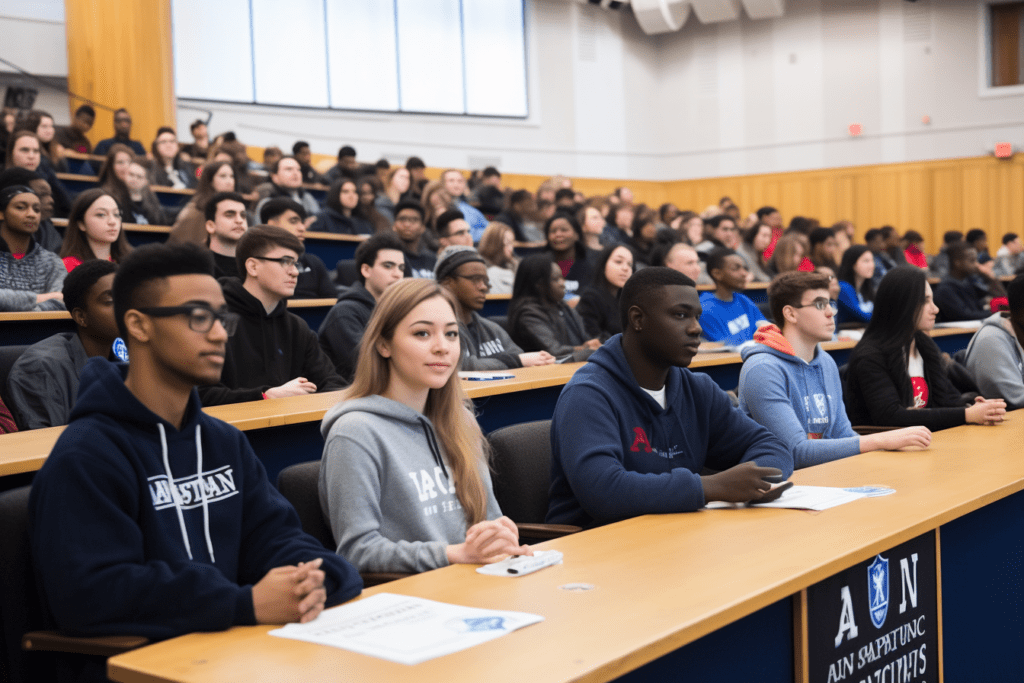
Google asserts that businesses see a return of two dollars for every one dollar spent on Google Ads. Despite the immediate visibility, the click-through rate (CTR) for paid search ads is around 2%, according to WordStream (2022).
Data from BrightEdge (2019) shows organic search drives 53% of all site traffic, which indicates the powerful reach and potential ROI of SEO.
A page at the top of organic search results often ranks in the top 10 for thousands of other keywords, according to Ahrefs.
In a survey from Databox, 70% of respondents indicated SEO drove more sales than PPC.
According to a study by WordStream, the average conversion rate for pay-per-click advertising across all industries is 3.75%.
The conversion rate for organic search can be as high as 16%.
As Google introduces Bard and its new Generative Search Experience, the content richness in those experiences calls into question the value of ads and traditional SEO tactics.
In the future, our ability to rank highly will depend on how well we answer the questions our target audience asks.
Search Engine Results Pages Are Yours for the Taking

Case Studies: “Proof in the Pudding”
Student-Focused Blog Strategy
In July 2018, we began writing and publishing four blogs per month for the Tulane School of Professional Advancement (SoPA).
Over time, our team identified abundant opportunities to nurture prospective students throughout the application process with information about career opportunities, online learning best practices, program-focused spotlights, and additional resources.
Our goal was to help guide them to inquiry, application, and, ultimately, enrollment.
The new strategy increased the monthly blog post frequency to eight posts in April 2020 and then ultimately to 12 per month in July 2020.
We strategically selected topics that spoke to student personas for key programs at multiple stages of the student’s journey.
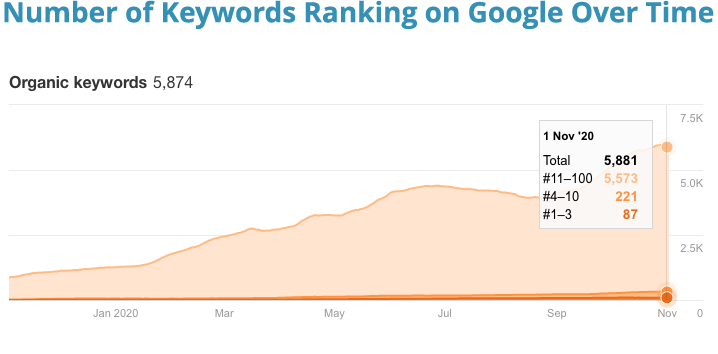
Blog Strategy Results:
- 569% increase in keyword ranking in the top 1-3 spots on Google
- 137% increase in organic blog traffic due to the first increase in post frequency
- 445% increase in organic blog traffic thanks to the further expansion of post frequency
Blogs drive substantial traffic, but traffic is just the first step. After a prospect visits the blog, they are added to the funnel and then nurtured with cross-platform messaging via paid advertising campaigns.
Content Optimization Case Study
From our keyword research on one of our client’s degree programs, we realized we had an opportunity for on-page SEO.
A struggle for educational websites, and all sites really, is balancing aesthetics with SEO. The site’s pages need to target keywords, and that requires creating content for SEO success.
As part of our higher education SEO campaign, we had to convince our client that adding content to a program page would lead to more organic traffic.
For the test, we optimized content for two pages.
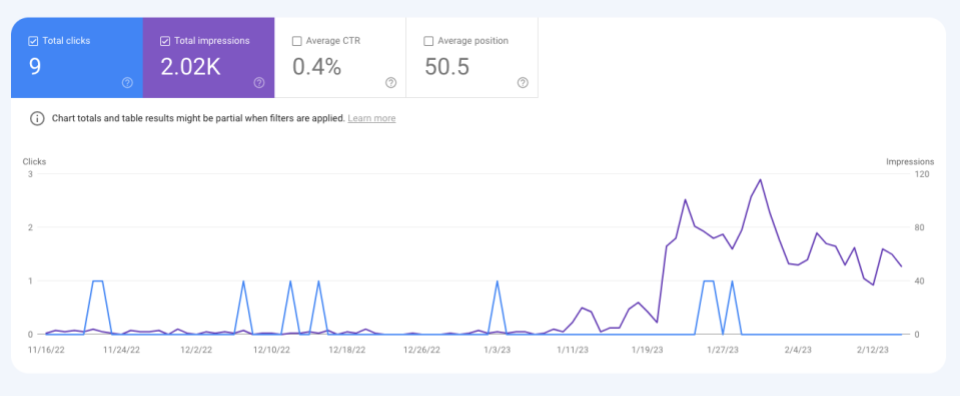
This resulted in immediate improvement in organic visibility. The pages now appear in search results for relevant, high-intent keywords and future students.
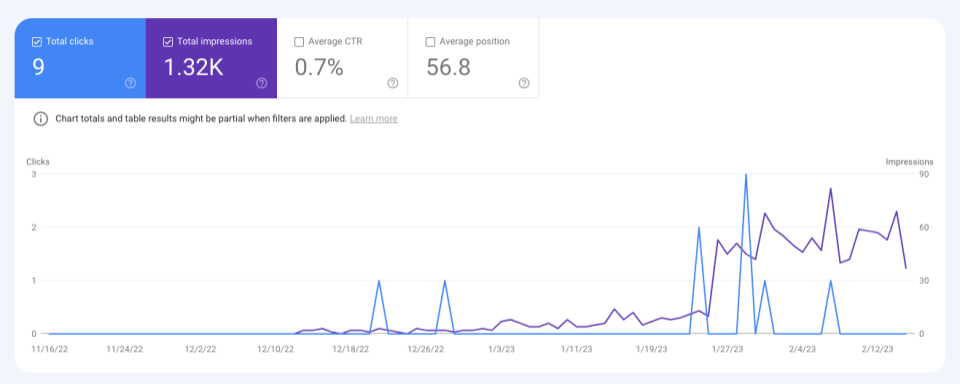
We expect these pages will continue to improve in ranking, reaching even more prospective students.
To get the most out of their SEO campaigns, higher ed institutions need to commit to consistent content creation as part of their SEO work.
Predicting the ROI of Your SEO Efforts
One of the best ways to use paid search and your other marketing channels is as a testbed to inform your SEO campaign.
The great thing about search ads is they help you understand what words bring visitors to your website and whether or not those keywords will have good conversion rates. While it’s globally true that SEO costs less than some other marketing campaigns, any money spent on marketing that doesn’t drive leads is wasted.
The Mathematical Proof of SEO for Higher Education

Using site analysis tools, you can estimate how much traffic you might get if you rank higher.
Advanced Web Ranking (AWR), a tool that tracks website ranking in many industries, has an easily accessible feature on their site where you can visualize the click-through rate (CTR) for search results, given different search features.
Very few searches these days return a list of 10 blue links. It’s much more common you’ll find maps, images, products, videos, and other features in the Google search results.
Search engines won’t tell you what SEO strategy will guarantee your site rises to the top, but you can come up with an estimate based on a few pieces of data. This way, you can see if SEO offers a lower cost to access those same search results.
Tools Can Do the Math for You
Advanced Web Ranking recently added a feature they call “Forecasting.” Given a set of search terms you want to rank highly for, AWR can forecast what a move from your current position to the top three or top ten might mean for potential students.
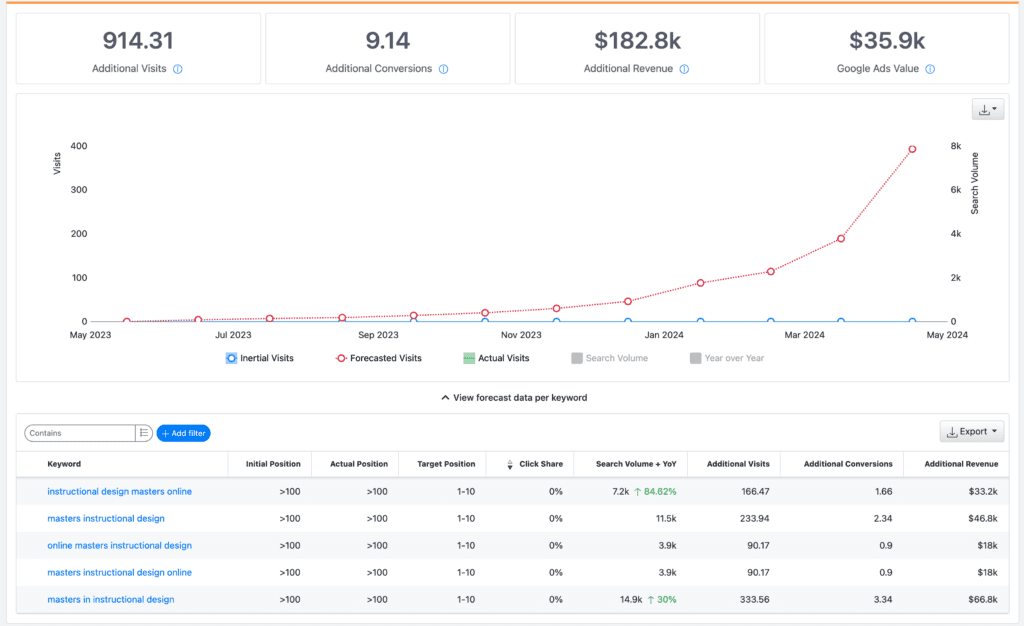
As you can see, this school, currently ranking outside the top 100 for “instructional design” related keywords, stands to gain as much as $182,000 in new student prospects with only a modest SEO campaign. I say “modest” because this forecast is based only on reaching the top ten. Imagine if, instead, we reached the top three, with images, videos, or featured snippets in the top ten as well.
The return could be much greater.
Search Engines Want the Answer
The core of your SEO efforts doesn’t have to be complicated. Yes, digital marketing is a big field, and technical SEO may require technical people and involvement with your institutional IT team. But, your site is probably good enough for search engines to understand.
A better investment would be researching to understand which terms search engines already think you should be found for. You’ll also want to spend time with your stakeholders to show them that SEO for higher education is one of the most cost-effective ways to get in front of prospective students.
Do You Need a New Website?

You probably don’t need a new site. But, you could probably stand to make some improvements.
While SEO is less expensive than advertising, it does have a cost. Whether it’s content, link building, or technical SEO, it’s not free.
- Technical SEO may require developers and IT folks to address indexing and crawling issues.
- A problem with load speed may mean investing in third-party technology like Cacheing or a Content Delivery Network.
- More and more prospective students are doing their research on mobile devices. And Google’s crawlers have become mobile-first — meaning your website must be mobile-friendly as well.
- Mobile or not, your website page load speed is critical. Other websites that load faster may be taking more of Google’s attention.
- Off-page SEO demonstrates your authority. Without search engines seeing other forms of reinforcement, like links and citations, your site may not get their vote.
Your Dean’s Frequently Asked Questions

Why can’t we see immediate results with SEO?
SEO is a long game, like planting a seed and watching it grow. Google needs time to understand the changes you’ve made and adjust the rankings accordingly. It takes patience, but it’s worth it.
How do we balance paid search and SEO?
Consider paid search for immediate visibility and SEO for long-term presence. It’s like balancing quick sprints with a marathon. Both have their merits and work best when used together.
How can we be sure that the improvement is due to SEO?
Use tools like Google Analytics and Google Search Console to track changes in traffic, rankings, and conversions. If you see improvements in organic traffic and engagement over time, that’s your SEO at work.
What kind of SEO strategy is most effective for universities?
Your higher education marketing strategy should be unique but generally focused on specific keywords, engaging content, building quality backlinks, and maintaining a user-friendly website. Think of it as a tailored course curriculum for your university’s online presence.
Want to Understand the Value of Your Higher Education SEO?
Be sure to check out the definitive review of the state of PCO SEO in UPCEA’s higher ed SEO research study.
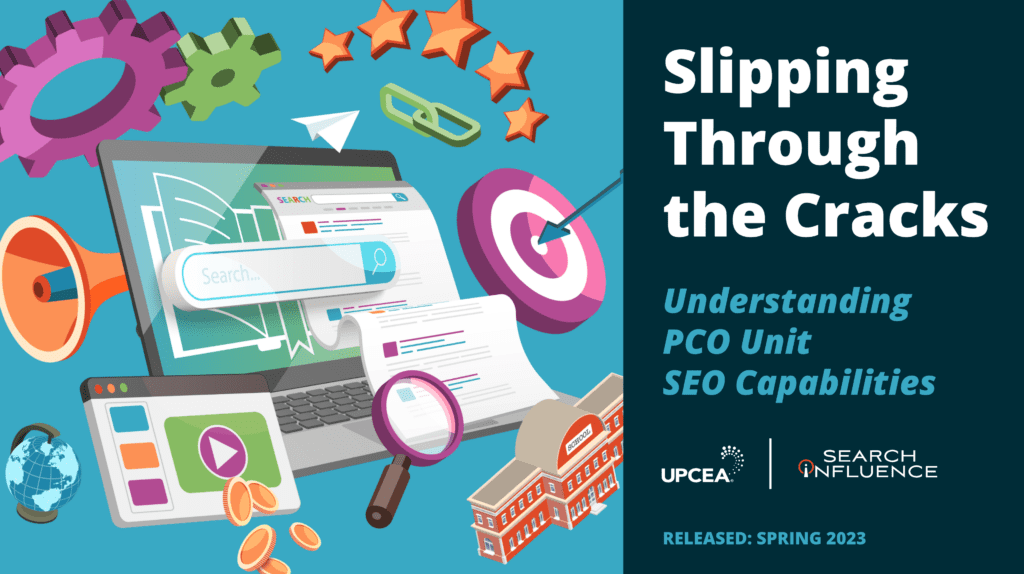
The payback for improving your website’s SEO is not as easily measurable as some other efforts, but it can make a big difference in attracting students. SEO is like a slow but steady tortoise, providing benefits over time.
Tools can predict how much SEO could help your university. But remember, SEO takes time to work, like planting a seed and waiting for it to grow. When done well, SEO is a smart and cost-effective way to attract learners to your institution.
SEO is an investment, not an expense. If you focus on the searches you know convert and you’re patient, you will see a great return.
All images are either screenshots or were created by the author using Midjourney. Some of the original images appeared first on Higher Education Marketing Institute and are reused here with permission of the author.
Will Scott is a recognized leader in digital marketing, known for coining the phrase “barnacle SEO” in 2008. Will is frequently invited to present at marketing and other industry conferences. Will founded Search Influence in 2006 with his wife, Angie Scott. Since putting his first website online in 1994, Will has led teams responsible for creating thousands of websites for business, building hundreds of thousands of pages in online directories, and delivering millions of visits from search. At Search Influence, Will directs the teams of dedicated professionals who optimize your potential! Outside of work, Will is a father to two boys, husband to Angie, his co-founder and COO in Search Influence. He is active in local non-profit and civic causes, an Ironman athlete, and a recovering heart patient.
